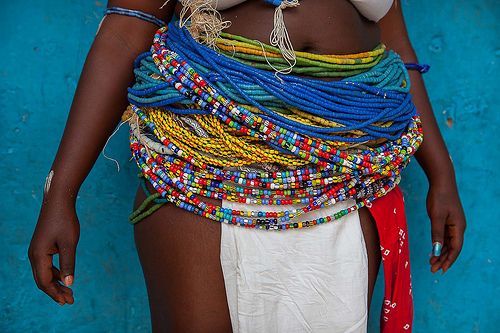The Open Dialogue:
For as much as society preaches being open-minded and wanting to learn, it is also important to put those intentions into practice in our daily lives. Learning to listen and understand what being open-minded means is imperative, but also understanding that in order for us to hold other people accountable we also have to confront our own shortcomings. I say this as a person of colour, a minority, and a first-generation immigrant child who grew up in multiple cultures at the same time; my multifaceted background has allowed me to see the world in multiple dimensions. I understand various perspectives, and even if I do not agree with certain views, I am still able to give others the chance to have an open dialogue. The hope is that in giving others a chance, they too will learn and try to give a chance to someone who they had never thought to. It is important that we as a society grasp this mindset, especially during these trying times.

Purpose & Intentions:
So, how does this relate to African waist beads? This fashion statement has recently started to become a trend due to TikTok and other social media platforms. With such an impressionable generation at the forefront of TikTok’s audience, it is important to ask yourself a few questions. 1) Even though it may be a trend, is it appropriate for me to wear? 2) When I wear these beads do I have a well-rounded knowledge of their purpose and history? 3) Do I educate others about African waist beads to credit their ancestry when I receive compliments?
Waist beads can be traced back to ancient Egyptian times and were then known as “girdle.” Waist beads are single or multiple strands of beads made from various kinds of glass, metal, crystal, bone and wooden beads that are worn around the waist and stomach. African waist beads were made popular by the Yoruba tribe of Nigeria. These beads have been noted to have been worn as early as the 15th century for many purposes such as rites of passage and as a status symbol.

Women in Ghana also wear waist beads as a symbolic adornment that can serve as a sign of wealth, femininity, and aristocracy as well as spiritual well-being. They are the perfect tool for one’s healing and spiritual journey as they encourage self-love, confidence, and beauty within a woman. Do not let influencers fool you into thinking that only slender women can wear them because African waist beads are worn beautifully by women of all shapes, sizes, and ages.
The placement of a woman’s beads can also symbolize different meanings. Moreover, they can be used to shape the waist like many Ghanaian women do. The practice of wearing multiple strands over time can help keep the waist small and accentuate one’s natural curves. Traditional waist beads are strung on cotton cord with no clasp or hook. It is believed that the beads possess the power to attract as well as evoke deep emotional responses. Traditional waist beads are meant to be worn until they break or fall off.
Each African waist bead is made by women for women with positive intentions to promote all of these purposes and each bead has different meanings and causes, depending on the color. You can personally create your own with beads of your choosing, purchase them from other waist bead makers, or they can be received as a gift.
Appropriation vs. Appreciation:
I offered the option on my Instagram story for people to ask me whatever they wanted to know about waist beads and a lot of people wanted to learn more about them and asked for more details. The one question that really stood out to me was, “Not accusing you or salt at all, just genuinely wondering if this is cultural appropriation? Lmk your thoughts just curious.” To Calrify, the person who asked is white, which made me uncomfortable and challenged me, but more importantly, it excited me to be able to open up this dialogue.
Part of unlearning toxic tendencies and learning new behaviors is acknowledging when not enough research has been done and/or admitting to not knowing enough, but wanting to be more educated on a topic. Although I am well educated and have done my research on African waist beads, I hadn’t really gathered research on different perspectives and their views toward people who are not Black wearing them.
So, I decided to interview a couple of people with different educational and cultural backgrounds to hear their perspectives. Most of them are from the Black community, one of them is a white ally, and even though I am a person of color I come from a different cultural background which I call a minority ally. Keep in mind that our perspectives and views come from our own experiences, education, and cultures. We do not speak or represent for the entirety of the communities that we are a part of.
Here is what I gathered after learning from their perspectives and what my answer would be for the individual who posted the initial question:
Though I am a person of color and a minority, to be honest, neither you nor I can really determine if this is cultural appropriation. Why? Because we did not grow up nor are we both part of the Black community. Instead, I made an effort to learn and gain different perspectives on what you asked me from people within the community and who are allies for the community.

The question was to see their views on this topic and their feelings toward me wearing the beads since this is a reflection of their culture. I explained to them why I wear them, how much they mean to me, and my connection with them, and surprisingly I educated some of them on the waist beads with my own knowledge and experience.
“There is cultural appropriation and cultural appreciation. By knowing what [the beads] mean and buying them from specifically African businesses, that is cultural appreciation whereas wearing them just because you think they are cute and knowing nothing about them is cultural appropriation,” says Talia Porter, a senior at Ohio University. “There is a fine line but [for you] it wasn’t crossed because you know the meaning behind them.”
Mikaela Woods, a junior at Ohio University, explained that it’s tricky because some people who may not know me, my perspective, and my intentions may perceive me as appropriating the culture.
Although most of my interviewees explained that I am appreciating the culture rather than appropriating it, they also gave insight to the other potential perspectives some may have. I am grateful for this insight because it helps me realize how important this topic is and how crucial it is to discuss different viewpoints with others.
When wearing African waist beads, be sure to do so for the right reasons and intentions. When you receive compliments on them, make sure to not only say thank you but to explain exactly what it is, where it originated from, and why you wear them. Just as we should apply open-mindedness in our daily lives, we should also apply the practice of learning, research, and how to respectively appreciate a culture.

















![EC Announces Elimination of Indelible Ink in Upcoming Elections [Video]](https://newsonghana.com/wp-content/uploads/2023/12/image-351-218x150.png)











































